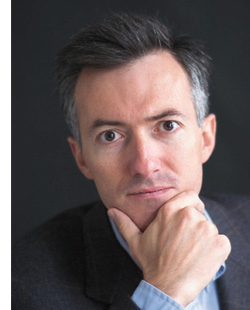
Whether on paper or in electronic format, the résumé or curriculum vitæ still plays a crucial role in job applications. By analyzing a draft CV kindly provided by OSA student member Matt Weed, this article offers some dos and don'ts toward effective communication.
Compared to many résumés I have seen lately, Matt's draft CV shows many positive qualities. It sets the name of the candidate very visibly (top left) with unique contact data (top right), rather than multiple addresses or phone numbers that can confuse a potential employer. It focuses on competencies and goes beyond the mere research experience to include public policy and leadership. In terms of style, it puts forward specific achievements with action verbs.
On the other hand, the CV is on the long side (more than two pages), with page breaks in the middle of sections and a third page 75 percent empty. With some tweaking of the text and/or page layout, it can either be brought back to exactly two pages (my recommendation) or perhaps be extended to three, with the third page devoted solely to publications and presentations, almost as an appendix.
More important still, the otherwise effective structure is not very visible. Despite being set in small caps bold, the headings do not stand out. Whatever white space is left on the first page ends up separating related information horizontally (such as degrees and dates) rather than separating distinct sections vertically. Similarly, the dates on the right are a little lost.
While I know it is common practice, I am always skeptical about career objectives and other so-called profile information. The objective stated here is vague, hence hardly useful. It is best moved to the application letter and written specifically toward a given company or job. On the CV, it can be replaced by some sort of tagline under the candidate's name, summing up his qualifications and, indirectly, previewing the structure of the CV.
As for style, perhaps the best advice I ever received is that good writing is read-out-loudable. Matt's CV uses conjugated verbs but without the subject (understood to be I), probably in an effort to be concise. The outcome is compact and consistent yet would not read out loud well. For example, many readers may not recognize “image” to be a verb in “image devices and processing steps”. Along the same lines, beware of industry jargon. In the sentence “Developed quantitative naval periscope image resolution metrics across functional groups”, I did not know what exactly was quantitative (the periscope, the image, the resolution, or the metrics) and I could not quite place the phrase “functional groups” (which, to me, evokes hydroxyl or alcohol groups on organic molecules).
Finally, a word of caution for those of you applying for jobs internationally. Matt's draft CV is US-centric, with phrases such as “Annually visit DC” or “Orange County schools”, a phone number without country code, and no information whatsoever on language skills. Even the full name “Matthew Davidson Weed” would confuse many people outside the United States, who are not used to middle names, especially when these sound like family names: To a Latin reader, “Davidson Weed” is a perfectly normal compound family name for the son of Mr. Davidson and Ms. Weed. For international communication, I recommend sticking to one given name and one family name (in that order), perhaps with the family name set in small caps to clarify which is which, given that not all cultures place the family name last.
In the attached PDFs, I propose a revised version of Matt's draft CV and I provide more detailed comments on both draft and revised versions.
Jean-luc Doumont (jl@principiae.be) holds a Ph.D. in applied physics from Stanford University. He now devotes his time and energy to training researchers and others in effective communication. He is a traveling lecturer for OSA.
Matthew Weed (mweed@creol.ucf.edu) is a Ph.D. Candidate in Optics studying integrated, chip-level lasers and photonic systems at the University of Central Florida. You can visit his website at www.MattDWeed.com.
